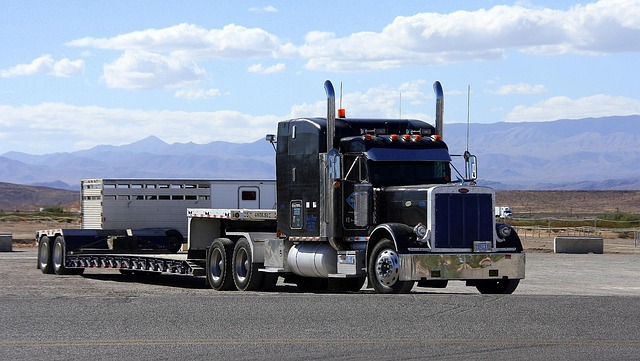Small fleet operators should assess their unique operational needs, focusing on specialized cargo protection and tailored liability coverage. Top-rated trucking insurance with robust physical damage clauses and tailored fleet policies prioritizing downtime and repair costs are essential. By exploring multi-truck coverage options, they can achieve the best balance of comprehensive protection and cost-effectiveness, ensuring optimal risk management for their operations.
Achieving optimal coverage for your small fleet doesn’t have to be a costly endeavor. In this guide, we’ll help you navigate the complex landscape of trucking insurance, revealing cost-effective strategies to ensure top-rated protection. From understanding unique operational risks to exploring diverse policy types and leveraging technology, we’ll show you how to create a tailored fleet policy that suits your business needs without breaking the bank. Discover the best coverage options for small fleet operators and maximize your savings.
Understanding Your Fleet's Unique Needs

Before crafting a cost-effective strategy for optimal coverage, small fleet operators must thoroughly understand their unique needs. Each trucking operation has distinct requirements, from specialized cargo protection plans to comprehensive liability coverage. For instance, a fleet specializing in long-haul transportation may require top-rated trucking insurance with robust physical damage clauses to safeguard against rare but significant incidents. Conversely, local delivery fleets could prioritize tailored fleet policies focusing on minimizing downtime and repair costs associated with frequent usage.
Furthermore, exploring multi-truck coverage options can significantly enhance protection for small fleets. These packages often offer bundled discounts and streamlined claims processes, eliminating the need for multiple insurance providers. By evaluating these diverse needs, operators can select the best coverage options that align with their specific operations, ensuring adequate protection without excessive spending. This strategic approach allows small fleet operators to maintain efficient and safe trucking while staying within budget constraints.
– Identifying risks specific to small fleets

Small fleets face unique challenges when it comes to achieving optimal coverage and managing risks. Unlike larger operations with dedicated risk management teams, small fleet operators often wear multiple hats, making it crucial to identify specific risks that can impact their business. One of the primary concerns is liability, especially during cargo transportation. With limited resources, these operators need comprehensive fleet insurance that covers not just physical damage to vehicles but also cargo protection plans to safeguard against loss or damage during transit.
Additionally, they should consider tailored fleet policies that offer multi-truck coverage options, ensuring that their entire fleet is protected regardless of the size or type of vehicles in operation. Top-rated trucking insurance providers understand these unique needs and can provide customized solutions, addressing concerns specific to small fleets while offering peace of mind and best coverage for their operations.
– Differentiating between operations and vehicles

When it comes to achieving optimal coverage for a small fleet, operators often face a unique challenge: balancing cost-effectiveness with comprehensive protection. A key step is differentiating between operations and vehicles. Operations refer to the day-to-day activities of your fleet, such as routing, maintenance schedules, and driver training—areas where efficient processes can significantly reduce risks and costs. On the other hand, vehicles are tangible assets that require specific insurance coverage.
For small fleet operators, seeking top-rated trucking insurance that includes comprehensive fleet insurance and tailored policies is essential. This should encompass liability coverage for potential damage or injuries caused by your vehicles, as well as cargo protection plans to safeguard the goods you transport. Additionally, physical damage insurance protects against unexpected events like accidents or natural disasters that could harm your fleet. Opting for multi-truck coverage options allows for a more holistic approach, ensuring that each vehicle and operation within your small fleet enjoys the best coverage possible without breaking the bank.
Strategizing for Comprehensive Coverage

For small fleet operators, achieving optimal coverage doesn’t have to come at a hefty price. Strategizing for comprehensive protection involves understanding your specific needs and leveraging cost-effective solutions. The first step is assessing your fleet’s risks, which could include vehicle wear and tear, driver safety, cargo loss or damage, and liability exposures. This assessment guides the selection of key coverage areas such as physical damage insurance to safeguard against accidents and natural disasters, and cargo protection plans designed to compensate for non-delivery or damaged goods.
Top-rated trucking insurance providers often offer tailored fleet policies that combine multiple coverages into a single, streamlined package. These can include comprehensive liability coverage for incidents involving third parties, as well as specific options for multi-truck coverage if your operation includes more than one vehicle. By choosing a provider known for its competitive pricing and excellent customer service, small fleet operators can secure high-quality protection without breaking the bank.
Achieving optimal coverage for your small fleet doesn’t have to be complex or costly. By understanding your unique operational needs and strategizing with tailored policies, you can secure comprehensive fleet insurance that includes liability coverage, cargo protection, and physical damage insurance. Explore top-rated trucking insurance options and consider multi-truck coverage plans to ensure the best protection for your assets. With these cost-effective strategies, small fleet operators can navigate risks confidently, ensuring a smoother and more secure future for their operations.
